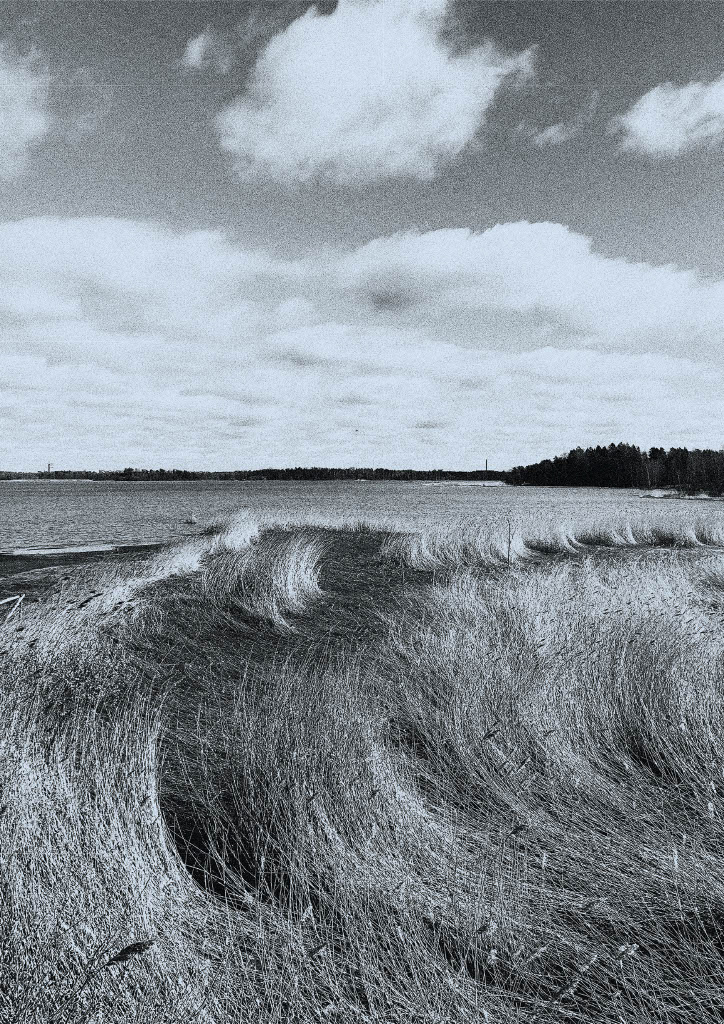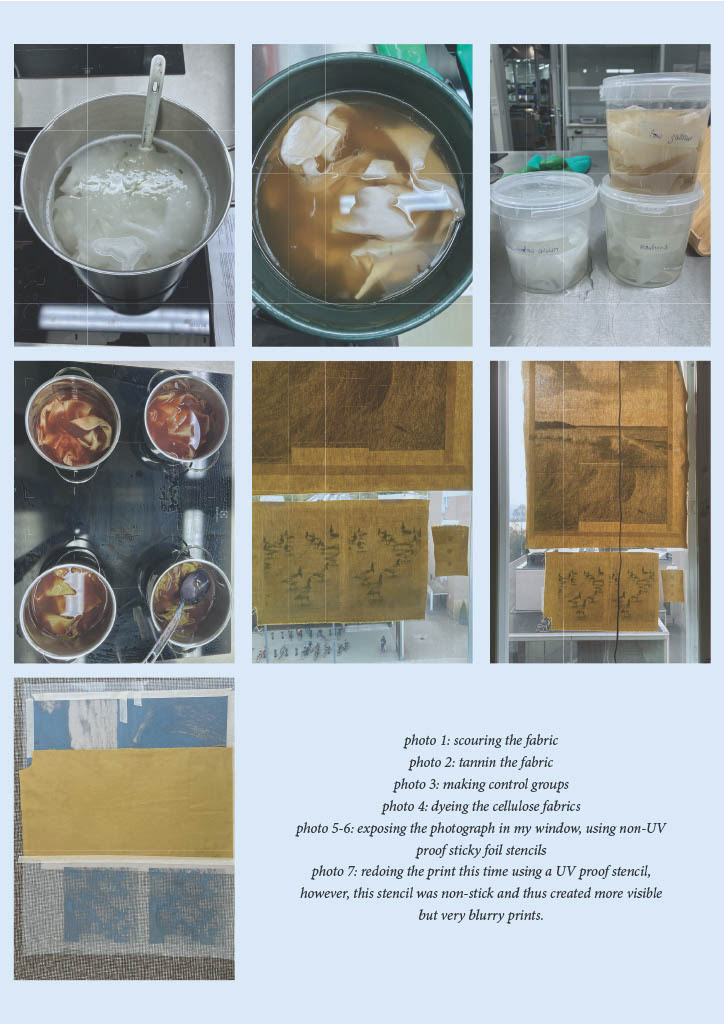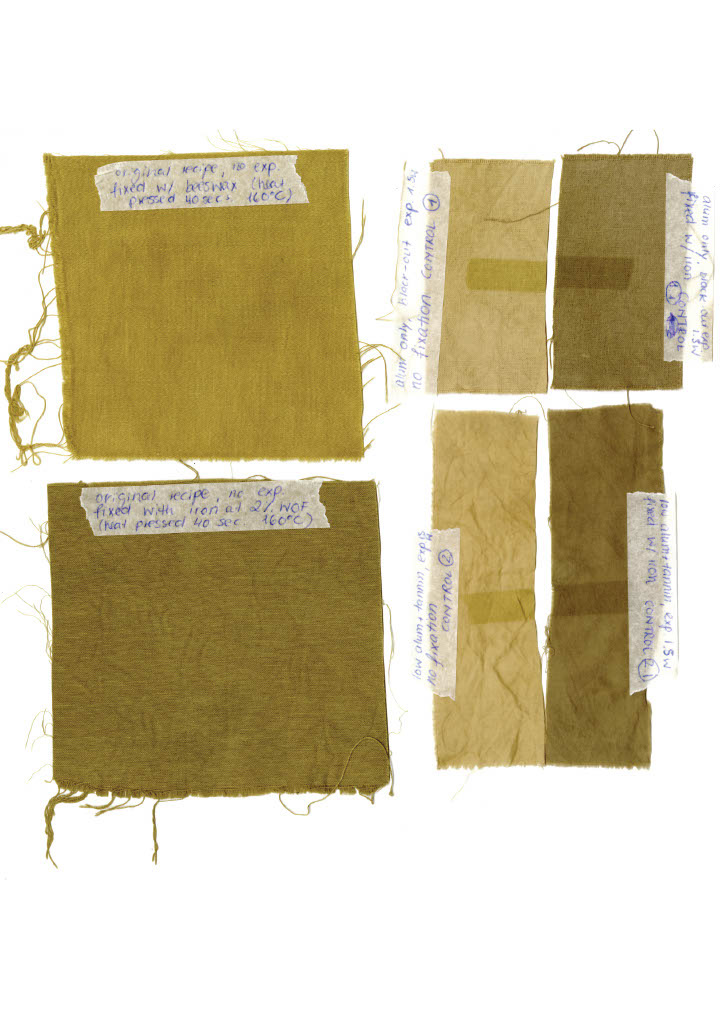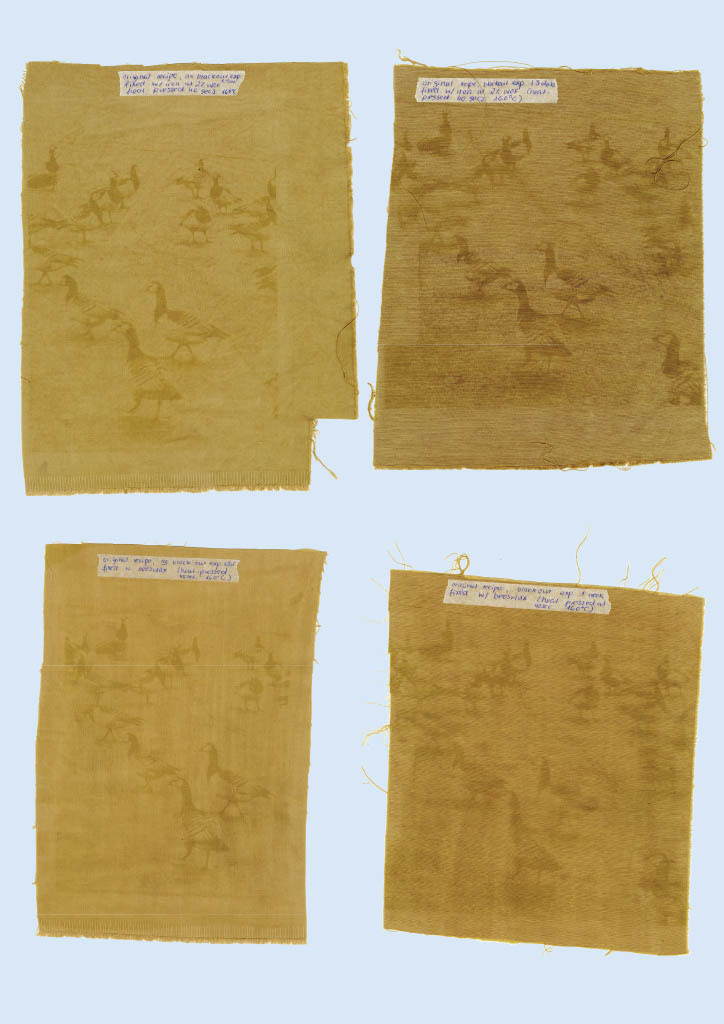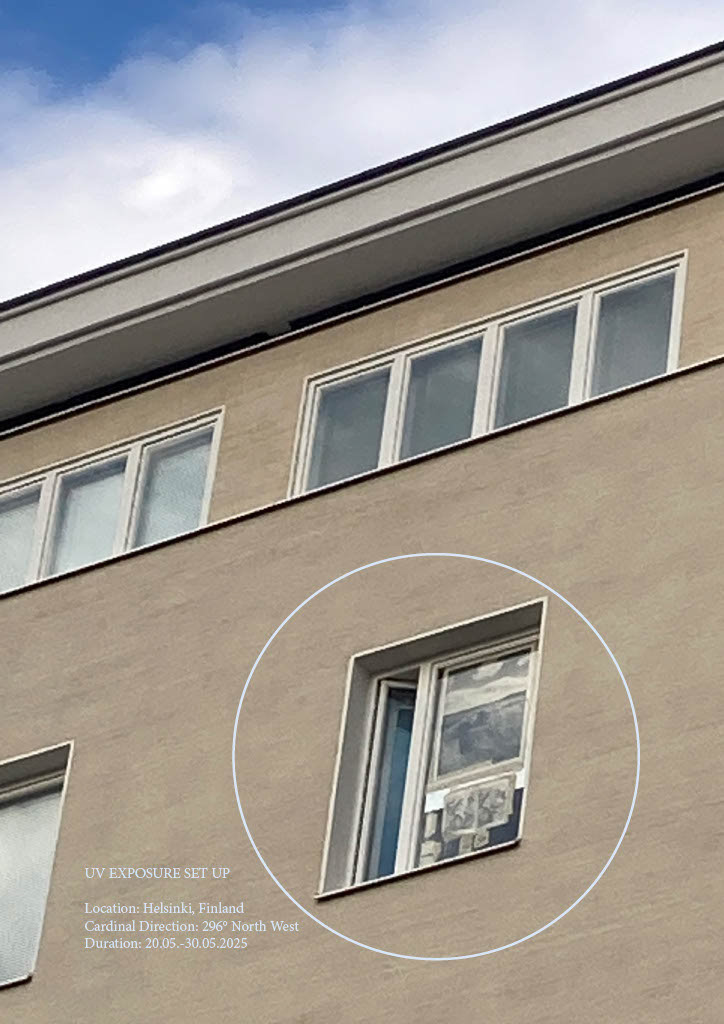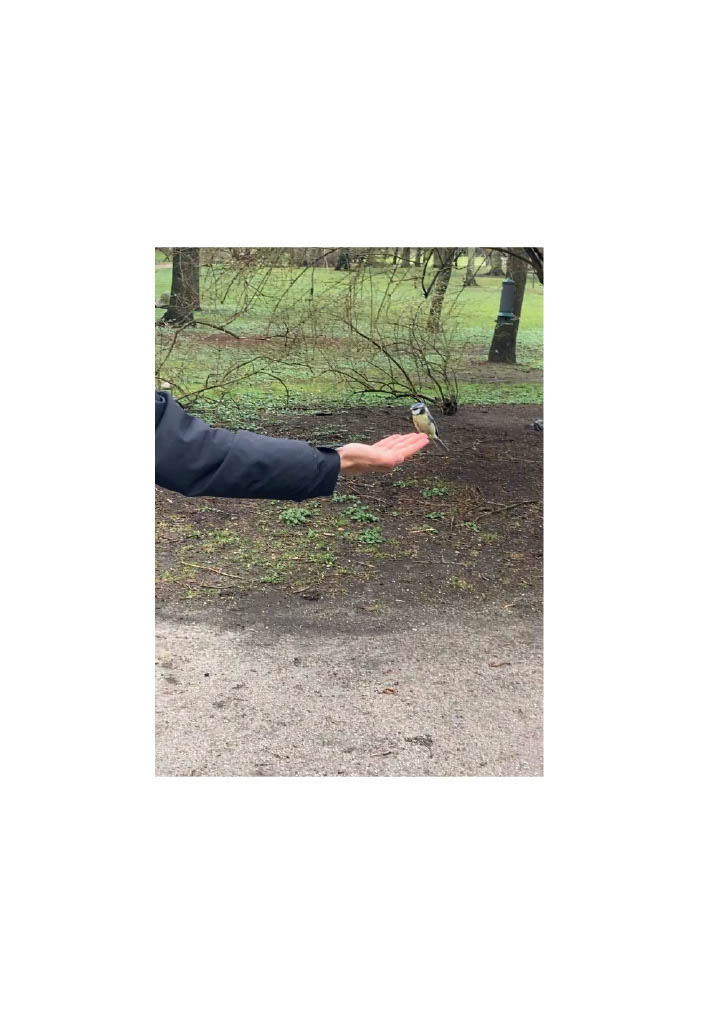Having spent much time outdoors and on the watchtowers this spring this project is inspired by the views and progressing sunlight. Curious about natural dyeing practices and their light-sensitive nature this project observes anthotypes on fabric – how to create and fix them to the fibre. Anthotypes are sunlight prints where natural pigment is partially exposed to UV light. This can be done for example using UV-proof stencils. The exposure process is very similar to cyanotypes, however, it does not use chemicals and, thus, takes much longer and is very light-sensitive. Traditionally, anthotypes are exposed on paper (e.g. using spinach or tumeric juice for pigment) and then kept in a darker space to avoid for the print to disappear over time. Using this technique on fabric offers potential for making it more light-fast after exposing and could offer a environmentally friendly alternative of printing onto textiles using very little energy and no harmful chemicals. In this series of experiments I used red onion skin dye as the natural pigment and a cotton satin fabric as the base. I used tannins and mordants at a lower percentage than traditional dyeing recipes recommend to allow for quicker exposure time. I placed stencils over the dyed fabric and used my window as the exposure frame. There was a few learning outcomes from that process: It is important to always use UV proof stencils to avoid bleaching out too much and pressing the stencil tightly to the fabric.
After around 1,5 weeks the print was visible on the fabric. In order to fix the print to the fabric I used a post-mordant and wax as a natural UV-blocker. Natural pigments will always be sensitive to light, however, I hope that these fixation methods could offer potential to explore this method in a more functional and wearable context.
Bringing it back to the visual inspiration of birdwatching some photographs of the views from the watchtowers were exposed on to the fabric using this method. This is an ongoing experiment.
